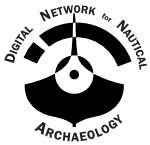Rhino Templates
Quote from Nigel Nayling on 27 August 2024, 15:12Over the last couple of decades, as ship projects have embraced the use of 3D software, and particularly Rhinoceros 3D, we have often developed templates in Rhino with layers and colours which allow different projects to produce broadly comparable data in an "international graphical language" especially when recording individual timbers. This approach was very much at the heart of FRAUG (Faro-Arm and Rhino Archaeological Users Group - the precursor to DN2A). As new data capture hardware and techniques have proliferated (e.g. multi-image photogrammetry and structured light scanning) such templates need to be developed / adapted to meet varying levels of data capture and interpretation.
At the 2023 workshop in Rostock, there was considerable discussion on the subject of Rhino templates with a broad consensus that comparable data is highly desirable but that we cannot be pre-/proscriptive and expect all projects to closely conform to identical templates. Mikkel has kindly re-invigorated this debate by designing a new template which should be of considerable interest to all of us who continue to use Rhino as our primary 3D software for nautical archaeology. My hope is that Mikkel will demonstrate the new template at our forthcoming workshop in Newport and also share his thinking on this here for wider discussion
Over the last couple of decades, as ship projects have embraced the use of 3D software, and particularly Rhinoceros 3D, we have often developed templates in Rhino with layers and colours which allow different projects to produce broadly comparable data in an "international graphical language" especially when recording individual timbers. This approach was very much at the heart of FRAUG (Faro-Arm and Rhino Archaeological Users Group - the precursor to DN2A). As new data capture hardware and techniques have proliferated (e.g. multi-image photogrammetry and structured light scanning) such templates need to be developed / adapted to meet varying levels of data capture and interpretation.
At the 2023 workshop in Rostock, there was considerable discussion on the subject of Rhino templates with a broad consensus that comparable data is highly desirable but that we cannot be pre-/proscriptive and expect all projects to closely conform to identical templates. Mikkel has kindly re-invigorated this debate by designing a new template which should be of considerable interest to all of us who continue to use Rhino as our primary 3D software for nautical archaeology. My hope is that Mikkel will demonstrate the new template at our forthcoming workshop in Newport and also share his thinking on this here for wider discussion
Quote from Mikkel on 28 August 2024, 14:29I will be happy to run you though our current Rhino template and the thoughts behind it. Among other things I made an attempt to map all historically known previous templates to one another - very insightful.
I should say that this current template is primarily targeted at the Annotated Scan Procedure (AnnScan, for short) published by van Damme et al. in 2020, but it will work equally well for 3D photogrammetry and other mesh data types. However, it has been a priority to ensure compatibility with previous recording methods.
Looking forward to seeing everyone in a short while!
I will be happy to run you though our current Rhino template and the thoughts behind it. Among other things I made an attempt to map all historically known previous templates to one another - very insightful.
I should say that this current template is primarily targeted at the Annotated Scan Procedure (AnnScan, for short) published by van Damme et al. in 2020, but it will work equally well for 3D photogrammetry and other mesh data types. However, it has been a priority to ensure compatibility with previous recording methods.
Looking forward to seeing everyone in a short while!
